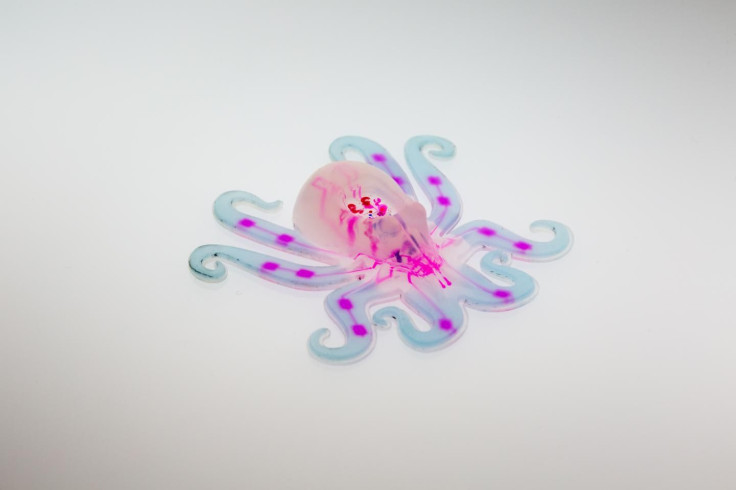Pneumatic Octobot: Soft Autonomous Robot Octopus 3D-Printed By Harvard Scientists

When most people imagine robots, even without dipping into science fiction, they usually conjure up at least some metal and wires and circuits, all of which are hard surfaces. But soft robots — a relatively new sub-field of robotics — have advantages over hard robots, especially given their flexibility and ability to safely interact with humans and other living beings.
Among the biggest challenges in creating soft robots are finding non-rigid parts for power sources and electronic circuitry. And these problems were successfully addressed by a research team from Harvard University that has designed the first entirely soft autonomous robot. In a boost to the nascent field of study, the researchers — inspired by octopuses — 3D-printed the “octobot.” Significantly, it is not tethered to an external power source or circuit board either.
The “octobot” is powered pneumatically — through the movement of air through its mostly hollow interior. In this case, a reaction between “a small of liquid fuel (hydrogen peroxide)” and a catalyst (platinum) produces “a large amount of gas” which flows into the limbs of the robot, making them move.
Michael Wehner, a postdoctoral fellow and co-first author of the research paper published in the journal Nature, said in a statement: “The wonderful thing about hydrogen peroxide is that a simple reaction between the chemical and a catalyst — in this case platinum — allows us to replace rigid power sources.”
Instead of an electronic oscillator, a microfluid logic circuit controls the chemical reaction inside the robot.
“The entire system is simple to fabricate, by combining three fabrication methods — soft lithography, molding and 3D printing — we can quickly manufacture these devices,” Ryan Truby, a graduate student and co-first author of the paper, said in the statement.
After this success, Harvard researchers plan “to design an octobot that can crawl, swim and interact with its environment.” Truby also expressed the hope that “roboticists, material scientists and researchers focused on advanced manufacturing” use the concept to create more complex designs.
The research paper, titled “An integrated design and fabrication strategy for entirely soft, autonomous robots,” was published Wednesday. “Our integrated design and rapid fabrication approach enables the programmable assembly of multiple materials within this architecture, laying the foundation for completely soft, autonomous robots,” it says.
© Copyright IBTimes 2024. All rights reserved.




















